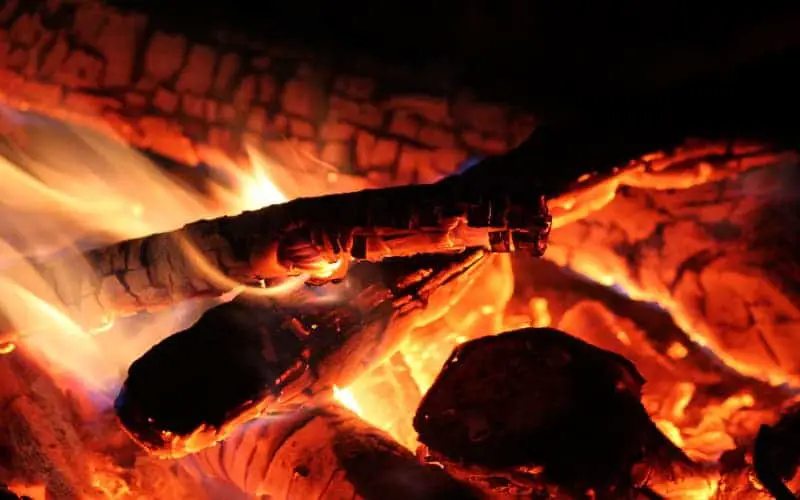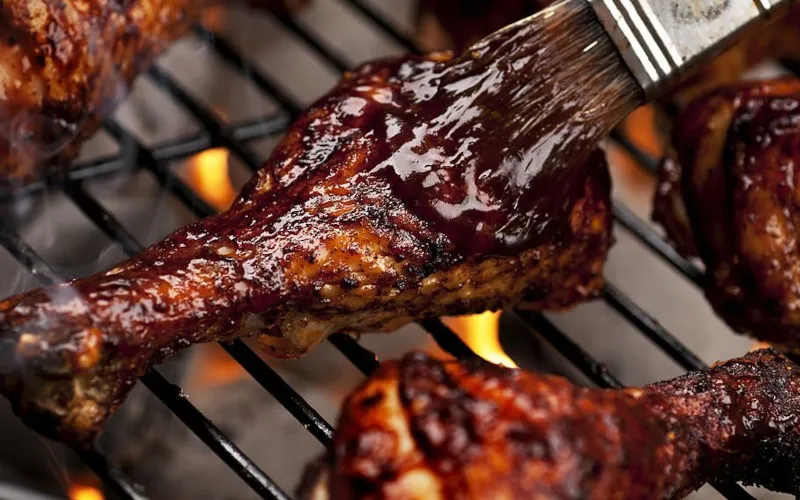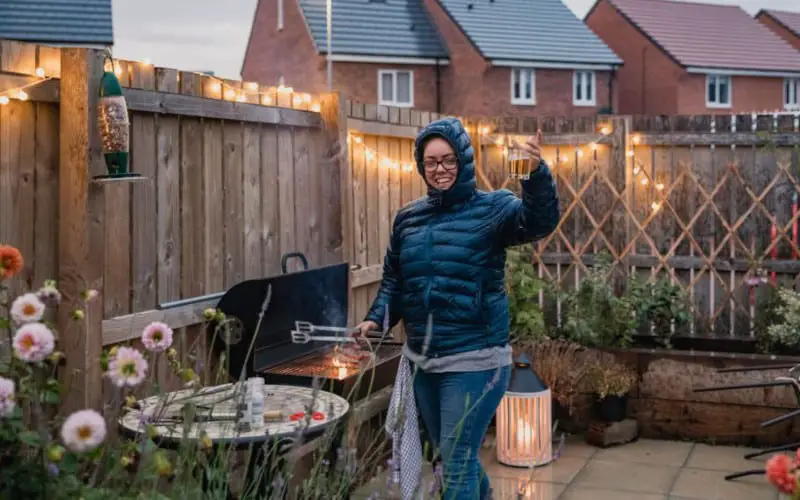Everyone likes to chow down on some meat when they get the chance, but how often do you find yourself unsure whether it’s cooked? If you’re a pork fan, that can be an even more common problem, since the texture and color of pork can vary significantly with temperature.
When cooking pork, you want to cook it thoroughly but not overdo it. Eating undercooked pork can lead to foodborne illness, while overcooked pork tastes dry and unappetizing.
Fortunately, there are several reliable ways to tell if your pork roast is cooked to perfection, depending on how you plan to serve it—whether sliced or shredded—and how you prefer the meat to taste.
Methods for Checking if Pork is Cooked
There are plenty of ways to cook pork, but figuring out when it’s done can sometimes be a guessing game. Don’t fret—it’s not as hard as you think! The only problem with cooking pork is that there isn’t really a surefire way to know how long something will take without keeping track of its progress.
Here are the methods for knowing if pork is cooked:
1. Thermometer
The easiest way to check if pork is done is by using a meat thermometer. Pork should be cooked until it reaches an internal temperature of 145 degrees Fahrenheit. Remember that this is internal temperature and cooking times may vary depending on factors such as how thick or thin your cuts are and how far away from other ingredients in your slow cooker they are placed.
You simply insert the thermometer at the thickest part of your pork roast. If it reads 145 degrees Fahrenheit, you’re good to go! Be sure not to touch the bone, as that will skew your reading.
This method works well for both smaller and larger cuts of pork. For example, boneless country-style ribs should cook for about four hours on low heat to attain 145 degrees Fahrenheit. Boneless chops can take anywhere between 30 minutes to two hours depending on their thickness.
Bone-in chops can take up to three hours and roasts up to six hours. When cooking a large cut like a shoulder or butt roast, remember that these usually take longer than chops because they need more time to cook properly. Depending on the time taken, be sure to monitor temperatures at regular intervals most preferably after every 1 hour.
2. Touch Test
If you don’t have a meat thermometer handy, you can check for doneness by touching your pork. As it cooks, its texture will change from firm and springy to soft and squishy. When it reaches that stage, take it out of your slow cooker.
That said, some people prefer their pork cooked until they can pull it apart with their fingers—if that’s what you like then just keep checking every 10 minutes or so until that happens.
Related: Pork Shoulder vs Pork Butt: Know Your Cuts
3. The Poke Test
This method is pretty self-explanatory: just poke your meat! The texture of cooked pork will be soft and spongy, so you should easily be able to push it in with a fork or your finger. It’s also helpful to use a pair of tongs when checking for doneness with a fork, as they can give you more control over how much pressure you apply.
The only thing to remember here is that bone-in cuts may feel firmer than boneless ones because they have extra connective tissue.
4. The Shake Test
This method of checking for doneness is a bit more difficult than others, but it’s great for large cuts of meat that can be hard to fit in your slow cooker. Simply shake your pork and listen for a rattle—if you hear one, it’s not done yet.
The sound means that liquid has separated from your meat, and you need to cook it longer. If you don’t hear any rattling, take out your pork.
5. The Eye Test
This method isn’t as accurate as using a meat thermometer, but it does give you a visual way of telling when your pork has reached its ideal level of doneness. Simply cut into your meat and check that no red remains. If there is, keep cooking for another 10 minutes or so.
You can also tell how done your pork is by looking at its color: pink meat means it’s undercooked, while brown means it’s cooked through.
How to Tell if Pork is Cooked?
While there are other methods, including piercing with a fork or inserting a meat thermometer, there’s no surer way to know that pork has been cooked thoroughly than judging by its color. A dark-colored pinkness on your pork means it’s undercooked, while an increasingly light shade of pink means it’s perfectly done.
The best part? You don’t need any fancy equipment to see these color changes; just your eyes will do.
How To Tell If Pork Is Done Without A Thermometer?
One of my favorite meats, pork, is excellent as long as it’s cooked correctly. For many people, knowing how to tell if pork is done can be a little tricky and they wind up overcooking or undercooking their meat. If you’re not sure how long to cook your pork, don’t worry!
Below are some simple ways you can test it without using a thermometer.
- First, insert a fork into your pork. If it slides in easily, then you’re good to go. The temperature doesn’t matter as much as how tender and juicy your meat will be when cooked correctly.
- Another test you can do is checking for bubbles. If you slice open your pork and you see that it’s bubbling, it means that it’s still rare, but as soon as you see a little bit of brown on top, then it’s time to take it out. To make sure there aren’t any pink spots in your meat, just cut into different places until all of your pork has changed color. This way, you know that it’s cooked correctly.
- Last, but not least, you can tell how done your pork is by its texture. If it’s soft and falls apart easily, it’s still rare. It will be a little harder to slice once cooked and start falling apart. If it’s hard but still pliable, then you know that your pork has been overcooked.
Is Pink Pork Safe to Eat?
Yes, pink pork can be safe to eat, but it depends on how pink it is. You’re probably good to go as long as there are no signs of blood or juices running from your pork roast. Color has no bearing on whether or not pork is ready to eat.
You can make pork as pink as you like by adding food coloring, but it will not affect how your meat tastes when cooked. To ensure that your pork has reached an internal temperature of at least 145 degrees Fahrenheit—the temperature at which foodborne bacteria will die—cook it until it’s done.
Again, color is not an indicator of doneness; a thermometer is your best bet for ensuring that your pork reaches a safe internal temperature.
What Color Should Pork Be When Done?
This can be an incredibly frustrating task, especially when one recipe says that pork should be white and another says it should be pink. In fact, both are right. The color of cooked pork varies depending on what cut you’re cooking, how you cook it, and how you like your meat done.
For instance, the color of a roast pork loin will vary from pale pink to medium-rare (pink) all the way up to well-done (gray). And yet, these roasts all taste great! Pork also has a tendency for color reversion, meaning that it can well-cooked pork can return to pink/redness after some time. So don’t worry about getting it wrong—you won’t.
Just keep in mind that color is not an indicator of pork doneness.
All you must know is that pork needs to reach an internal temperature of 145 degrees Fahrenheit before you pull it off the heat source. Also, remember that pork continues to cook even after being removed from heat; allow 10 degrees every five minutes after removing from the heat source.
How Do You Tell If Pork Is Cooked All The Way Through?
According to The Culinary Institute of America, you can check whether pork has reached a safe internal temperature by inserting an instant-read thermometer into the thickest part of your roast, and then reading it when it reaches a safe temperature.
Note that you don’t just insert the thermometer on any part; it’s the deepest or thickest part that must be checked. Deep parts may still have uncooked juices while shallower ones may have overcooked ones so be sure to use a thermometer with a long stem to reach all areas without cutting up your meat too much.
If you are cooking more than one piece of meat at once, use a separate thermometer for each one; they won’t all reach their final temperatures at precisely the same time.
Frequently Asked Questions
How Long Do You Cook Pork For?
The length of time largely depends on how thick your pork cut is, how tough it is, and your cooking temperature. Pitmasters advocate for 25 minutes/pound of pork at 350 degrees Fahrenheit until it reaches an internal temperature of 145 degrees Fahrenheit. However, you should consider a few different factors when determining your pork cooking time.
Leaner cuts are likely to take less time compared to thicker cuts. Cuts from tougher muscles such as the shoulder may take a longer time than cuts from soft parts such as the loin. Next, you’ll want to take into account how big your cut of meat is in comparison with what size pan you’re cooking it in and how much fat it has on it.
If you have a small piece of meat and lots of room in your pan, it’s going to cook faster than something bigger and bulkier that needs more space. One way you can speed up your cooking time for pork chops and other cuts, however, is by placing them on a rack or some type of elevated surface.
The higher heat circulates around all sides of your pork, speeding up the cooking process.
How Long Should I Cook A 2 Lb Pork Roast?
According to most cooking charts, a two-pound pork roast should take about 20 minutes per pound at 350 degrees Fahrenheit. However, depending on how thick your cut of meat is and how you like it cooked, you may want to add or subtract some time.
For example, a smaller cut that’s 1-inch thick will likely cook faster than a larger cut that’s 3-inches thick. If you like your pork more well done than others, you might want to add a few extra minutes.
Is Pork Cooked When It’s White?
Yes! In fact, when pork reaches a point of turning white, consider it overcooked cooked. At this point, it will have lost some of its juices and will be less flavorful than it would be if you left it on longer.
What Happens If You Eat Undercooked Pork?
While undercooked pork may not be deadly, it can make you very sick. Food-borne illnesses are caused by contaminated food usually when the meat hasn’t been cooked long enough or at a high enough temperature, but with pork, there’s one more common cause: trichinosis.
This disease comes from a parasite that can infect pigs and then humans. It can lead to swelling of your face and neck, diarrhea, nausea and vomiting, muscle pain and weakness as well as difficulty breathing.
According to the Centers for Disease Control and Prevention (CDC), about 1 in 6 cases of trichinosis come from eating raw or undercooked pork products.
Does Pork Need To Be Fully Cooked?
It’s very important that you cook pork until it reaches an internal temperature of 145 degrees Fahrenheit. This will kill any bacteria present in your meat, which can cause food-borne illnesses.
However, there are some cuts of pork that are safe to eat rare or medium-rare. For example, ground pork and loin chops are safe to eat at 145 degrees Fahrenheit while tenderloin should be cooked all the way through at 160 degrees Fahrenheit.
Can Pork Be Pink In The Middle?
Yes, pork can be pink in the middle and still be safe to eat. When pork is undercooked, it’s going to look a lot like raw meat. However, when you cook it long enough, it will turn white and then eventually brown in color. At that point, it’s safe to eat and won’t cause food-borne illnesses.
Conclusion
Pork should be cooked to an internal temperature of 145 degrees Fahrenheit. You can test for doneness by inserting a meat thermometer into the thickest part of your roast or chop. If you don’t have a meat thermometer, use the above-discussed physical cues.
The only way to know for sure that pork is done cooking is to either pull it apart with two forks and inspect it visually or cut off a small piece and taste it. The juice from undercooked pork will run clear; overcooked pork will look dry and crumbly.





